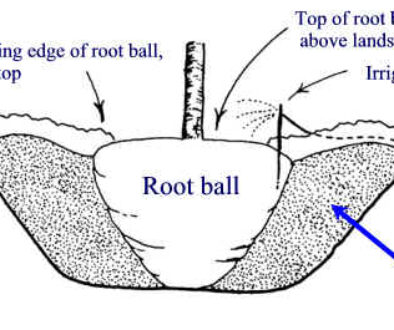Winter Over-seeding in Arizona
Many Arizona communities around the valley are gearing up for winter seeding and cutting back on water usage from the community’s turf areas. September is the best month to start transitioning your lawn for the winter Ryegrass. In addition to being more aesthetically pleasing than a brown lawn from the dormant Bermuda grass, maintaining a healthy green lawn all year provides the added benefit of keeping weeds under control.
 It is important that you make the decision early on if you will be transitioning your turf from the Bermuda grass, which goes dormant in the winter, to the lush winter Ryegrass, so that you can properly prepare your lawn for over-seeding. Perennial Ryegrass is preferred to Annual Ryegrass here in Phoenix because its blade is a darker green and a more durable grass to cut. Waiting until your Bermuda lawn goes dormant naturally before over-seeding is not the best idea. Seed germination works best when the season is still a little warmer, making October the perfect month to start planting. There is only a small window of opportunity each year when conditions are ideal, which is why it is so important to plan ahead.
It is important that you make the decision early on if you will be transitioning your turf from the Bermuda grass, which goes dormant in the winter, to the lush winter Ryegrass, so that you can properly prepare your lawn for over-seeding. Perennial Ryegrass is preferred to Annual Ryegrass here in Phoenix because its blade is a darker green and a more durable grass to cut. Waiting until your Bermuda lawn goes dormant naturally before over-seeding is not the best idea. Seed germination works best when the season is still a little warmer, making October the perfect month to start planting. There is only a small window of opportunity each year when conditions are ideal, which is why it is so important to plan ahead.
How to Install a Winter Lawn in Phoenix, Arizona
1) Stop fertilizing 4 to 6 weeks prior to over-seeding and cut back on watering.
2) As a recommended practice, dethatch your lawn prior to scalping if needed. Thatch is the dead leaves, stems, and roots under the green part of the grass and just above the soil. Set the dethatcher blades to run at about 1/4” above the soil to help clear out the dead debris and then discard. Be sure to not dig into the soils as you may damage the root structure of your Bermuda grass and you will want for it to come back in the spring.
3) The next step is scalping. This is the process of setting your mower blades to cut the Bermuda grass down to ¼” or ½”. If you are using a rotary mower, ¾” is acceptable. Scalping your lawn allows for the sunlight to get to the Ryegrass to assist with germination.
4) Apply 10 lbs. of seed per 1000 sq. ft. of lawn with a broadcast spreader to evenly spread the seed across the turf area.
5) Adjust your watering schedule to 3 to 4 times per day with light 5 to 7-minute durations to keep the seeds damp. You want to avoid the seeds becoming too dry, or overly saturated during the 2 weeks of the germination process.
6) Apply iron & calcium nitrate at least once before frost.
After about 2 to 4 weeks of growth you can mow the lawn and start reducing the watering schedule to 3 times weekly for about 8-20 minutes depending on the sprinkler head types on your property. Watering schedules can be based on preference on the results you are looking for.
 Call ELS
Call ELS
Did you know that ELS has a complete Landscape Maintenance Division that includes full-service maintenance management services, water conservation management, qualified/certified Division Managers, Area Managers and Irrigation Technicians? Contact Ashley Tutelo at ashleyt@evergreenaz.com or 602.243.1106 for more information on how Evergreen Landscaping Services (ELS) can assist your community today.




